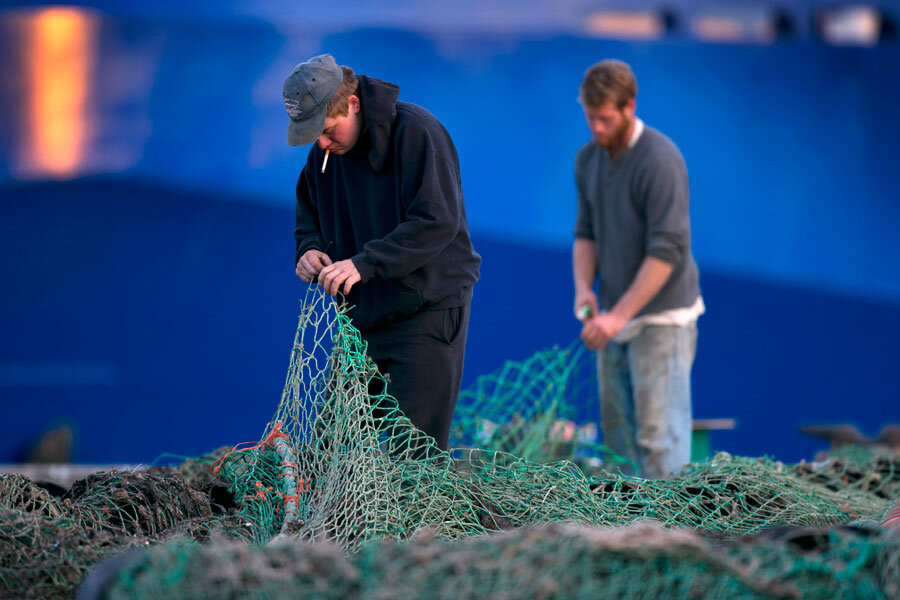Fishermen obeyed their quotas, so why did Maine cod stocks collapse?
Loading...
A proactive effort by fishery managers to increase a distinct New England cod population may have actually led to the population’s precipitous decline, a new study suggests.
Dr. Andrew Pershing from the Gulf of Maine Research Institute (GMRI), lead author of the study released Thursday in Science, explained for the first time why cod stocks in the Gulf of Maine have decreased to 3 to 4 percent of sustainable levels, despite numerous harvesting restrictions in 2010 by fisheries managers.
Fisheries published strict quota limits for fishermen without accounting for ocean warming in the Gulf of Maine, says the study, where warming is occurring 99 percent faster than anywhere else on the planet, because of the Gulf Stream and climate oscillations in the Atlantic. By not accounting for such an influential change, fisheries set quota ceilings that were too high and inadvertently endorsed severe overfishing.
Dr. Pershing is "not surprised” current cod fishery models led to overfishing, he told the Christian Science Monitor.
The current model records the age demographics of fish caught, "assuming constant survival from one age to the next" – an assumption that could hold true under ordinary circumstances, but not in the face of warming seas.
Warm waters inhibit cod reproduction and young spawn survival. "Our hypothesis is that feeding patterns for larvae have changed so fewer may have survived, and the warm water could make the young fish more available to predators," Pershing explains. "The [quota] system is not designed to look at these systems and factors."
Pershing and his colleagues say the recent quotas have relied on statistical accounts of cod demographics, which "works really well for a lot of stocks, where the historical conditions are a good signal of the current condition," but which failed in the face of the warming Gulf habitat.
Fisheries did successfully enforce their quotas among fishermen – but the limits were wrong.
And as much as they might want to, oceanographers can't wave a wand and cool the Gulf of Maine back down.
"All we can control is what people are fishing and people’s expectations," Jennifer Goebel, a public affairs officer with NOAA fisheries, tells The Monitor. "If this is the farthest south that cod live, maybe we can’t rebuild this fishery. Maybe that’s unrealistic now."
Moving forward, what is the most influential take away from the cod case?
Warming waters call for a complete fishery model makeover, says Pershing.
"We can’t rely on assuming the world is how it has been," he says. "We really have to wrestle with these changes and be realistic about what they mean. If you don't account for temperature, we are setting this goal much higher than it can be."
NOAA ranks cod as the 8th most commonly eaten seafood species in the US, but cod fans will soon have to find an alternative. As the Monitor's Michael Holtz reported last week, fish farming is becoming prevalent throughout the world, and a robust shellfish industry is spreading across New England waters.








